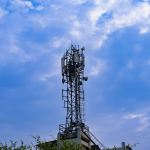Tarifica, a leading telecom analytics firm, has released its latest Data Dive analysis, shedding light on the critical roles of Fixed Wireless Access (FWA) and fiber technologies in expanding internet connectivity and bridging the digital divide.
According to the analysis, based on data from Tarifica’s Telecom Pricing Intelligence Platform, while fiber offers unparalleled speed and reliability, FWA presents a compelling alternative, particularly in regions where laying physical cables is impractical or cost prohibitive.
Soichi Nakajima, Vice President of Data and Analysis at Tarifica, commented, “Our exploration of Fixed Wireless Access (FWA) and fiber plans across various countries highlights the importance of both technologies in expanding internet access. While fiber offers unmatched speed and reliability, FWA plays a crucial role in bridging connectivity gaps, especially in areas where laying physical cables is challenging.”
In a chart mapping FWA plans from the US, Germany, and France, Tarifica found that FWA pricing in the United States remains expensive compared to Germany and France. However, the emergence of 5G FWA offers promise for connecting remote areas in the US.
Nakajima added, “In the United States, fiber remains the preferred choice due to its superior performance, but the emergence of 5G FWA presents an opportunity to connect remote areas. Meanwhile, Germany’s diverse FWA landscape caters to a range of speed and data requirements, providing versatility for users in urban and rural areas.”
Despite France’s FWA plans being the cheapest and fastest of the three countries considered, fiber reigns supreme in the country, emphasizing the market’s preference for high-speed, bundled solutions.
As technology advances and infrastructure expands, FWA and fiber will continue to coexist, with customer preference hinging on factors such as speed requirements, coverage area, and budget constraints. The shift towards more accessible and cost-effective connectivity solutions underscores the importance of innovation and competition in the telecommunications landscape, driving towards a more inclusive and connected society.
Nakajima concluded, “FWA fills a crucial gap in connectivity, providing a lifeline for communities where fiber infrastructure is unavailable. However, when both options are available, fiber’s superior speed and reliability provide greater value for the money, making it the preferred choice.”
To access the analysis, please click here.















